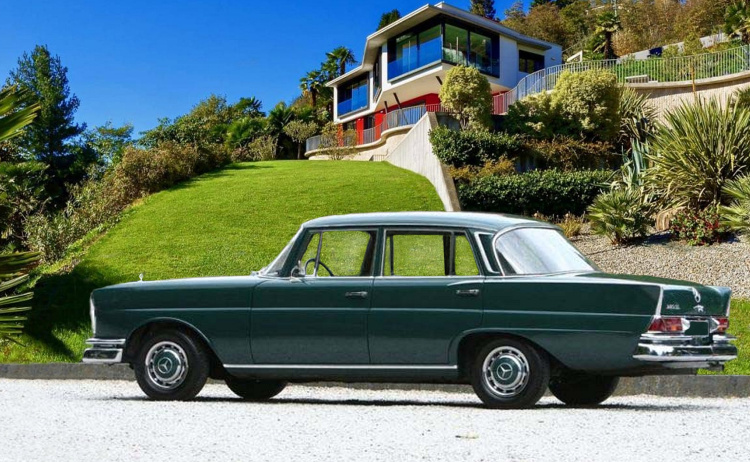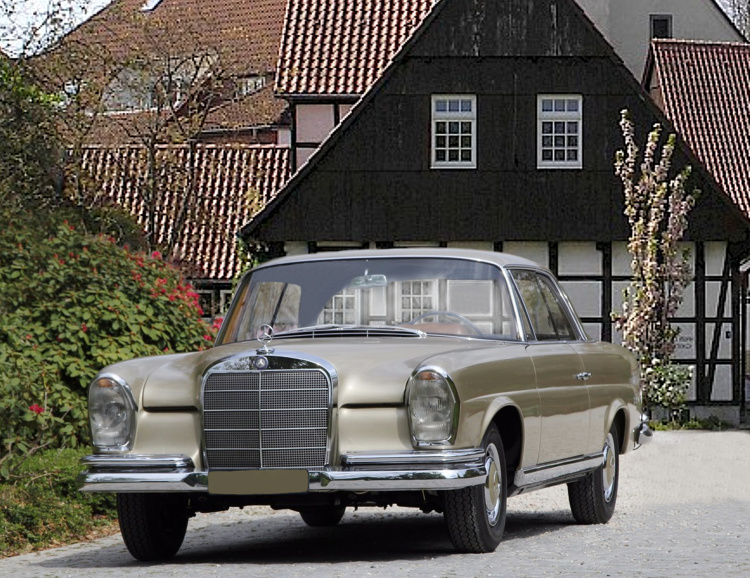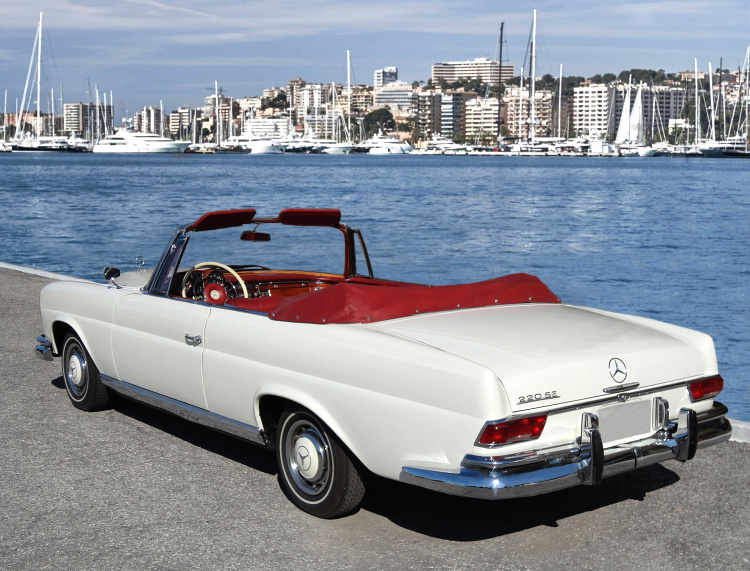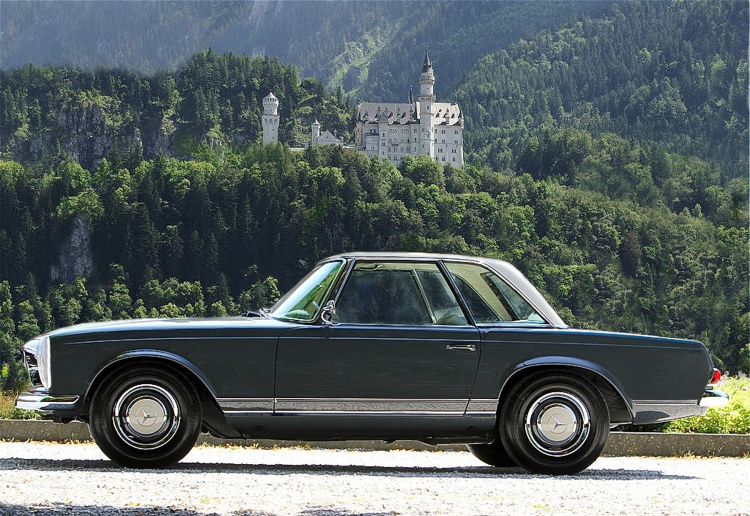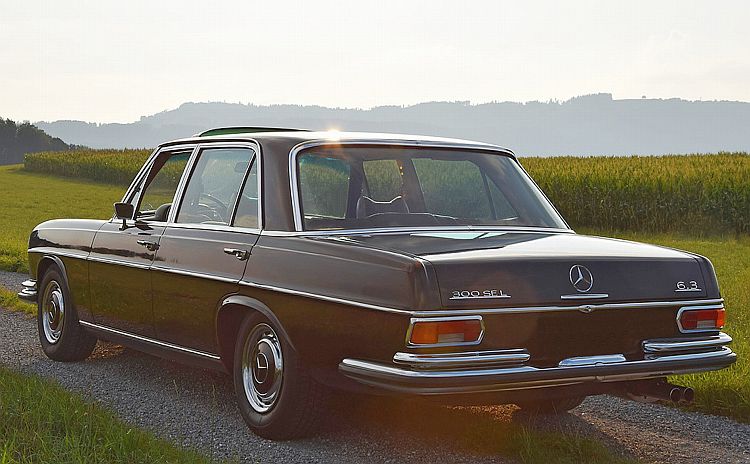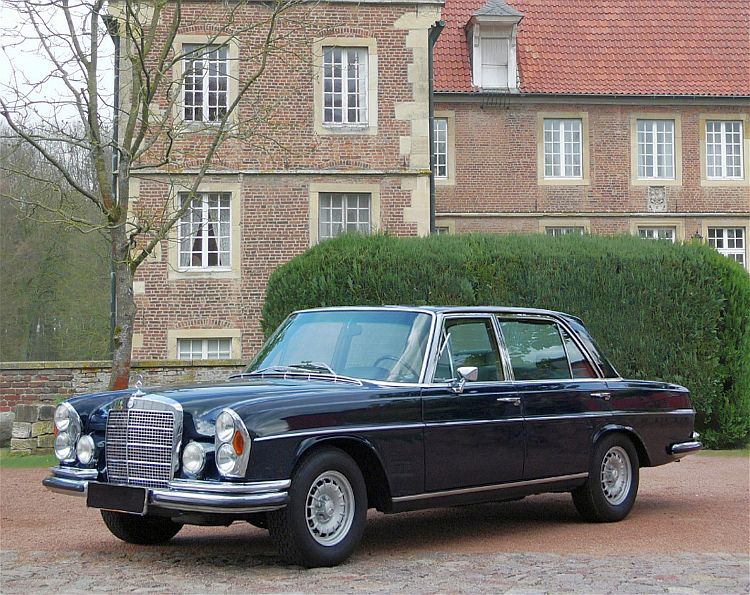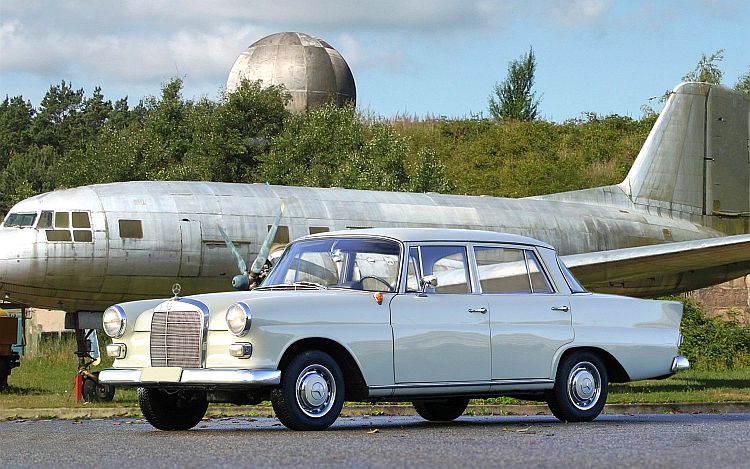Mercedes 220b series, the car for America
Mercedes W111 220b – 220SE and 230S (1959-1968)
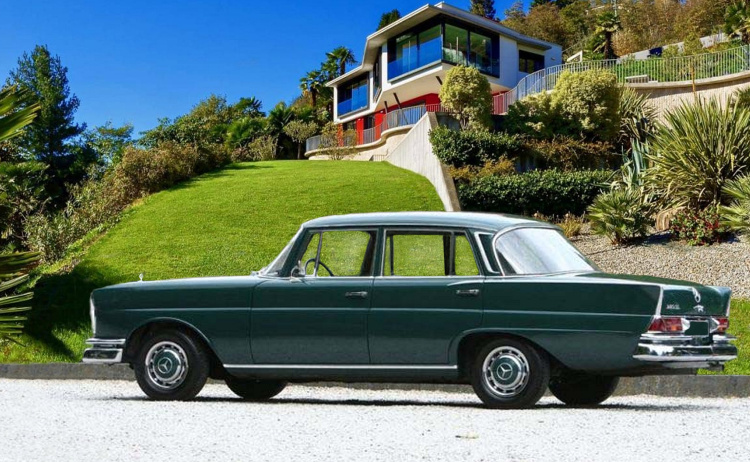
Mercedes 220b: Prof. Fritz Nallinger, chief engineer and member of the Mercedes Board of Management, asked Rudolf Uhlenhaut (head of passenger car development), Karl Wilfert (head of body development) and Josef Müller (head of engine development) for a meeting to discuss the Ponton successor. This was in early 1956. The board had already agreed on two things, he told them. The passenger compartment had to be roomier, and the launch date was set for the fall of 1959. Everything else he wanted to discuss with them now.
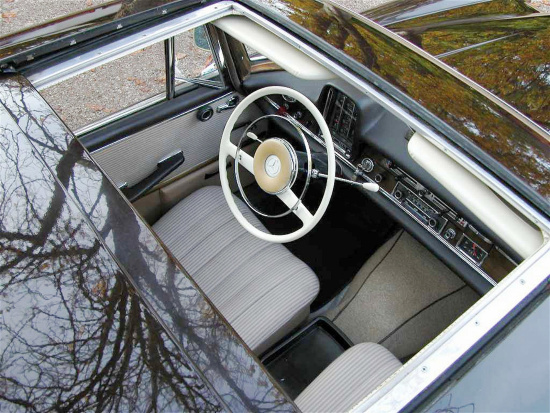
Mercedes W111 220S, 1962
Wilfert and his team lengthened the new car, which was given the internal code W111, by 4.9 inches (12.5 cm). The width was increased by 5 cm and the height was reduced by 4.5 cm. The headlamp design was taken from the 300SL Roadster. It would become a feature of Mercedes executive cars for the next decade. Viewed from the front, the car had a dynamic and powerful appearance.
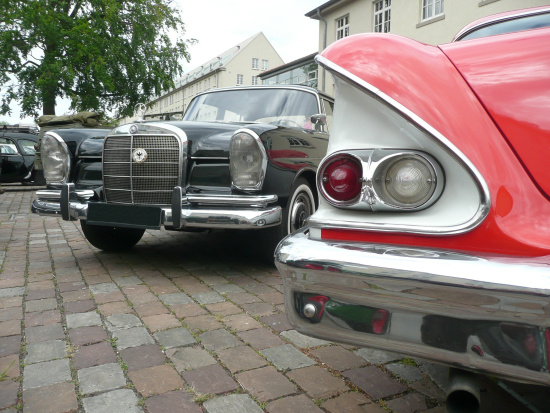
But it was not only the passenger compartment that was increased in size. The trunk was also 50% larger than the Ponton model. A larger greenhouse increased overall visibility by about 35%.
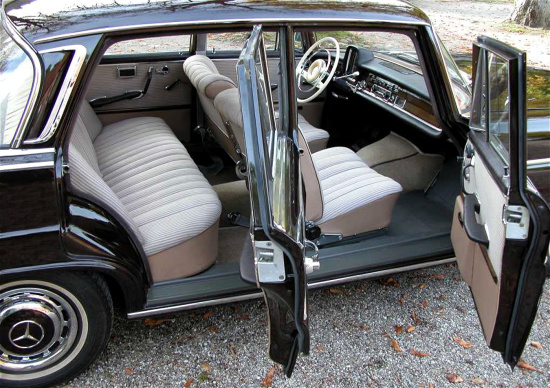
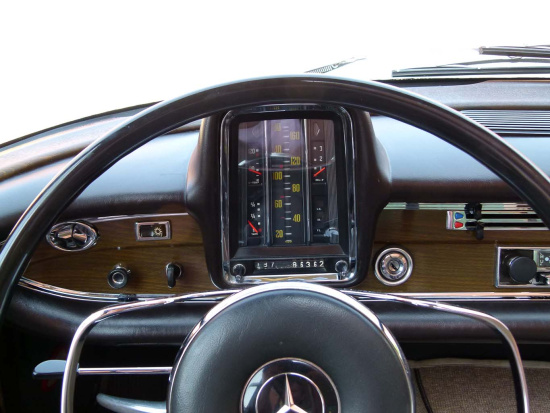
After the fintail, Mercedes returned to round instruments
The Mercedes 220b innovative safety system
The Mercedes 220b series was the first car in the world in which a passenger safety concept was an integral part of the development from the very beginning. Daimler-Benz safety guru Béla Barényi divided the car body into three separate parts. A rigid passenger compartment and a soft front and rear end. These were now called crumple zones because they had to absorb energy in the event of a collision.
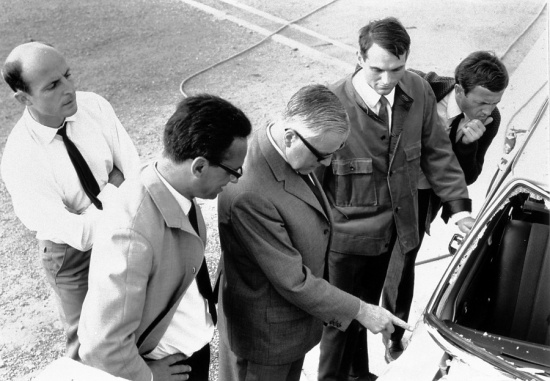
Béla Barény inspects with colleagues the deformed body of a Mercedes sedan
The safety concept was also visible inside the W111, as hard, sharp-edged interior trim had all but disappeared. Passengers were surrounded by a thickly padded dashboard, recessed controls, padded window surrounds, armrests and sun visors. A new safety steering wheel and column also debuted in the W111 Sedan. It collapsed on impact.
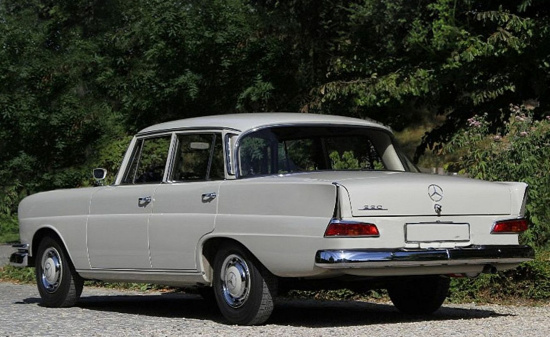
The biggest export market was North America
The export option was high on the board’s agenda. So the design of the car had to appeal to many different markets. The biggest export market was of course the USA. So one of the design features was the wraparound windshield. Another was the slightly raised rear edges, which later gave the car its nickname: Fintail. Shortly before the car’s introduction, Karl Wilfert was not too happy with the American-influenced fins and wanted to abandon them. But it was too late, all the necessary tools had already been ordered.
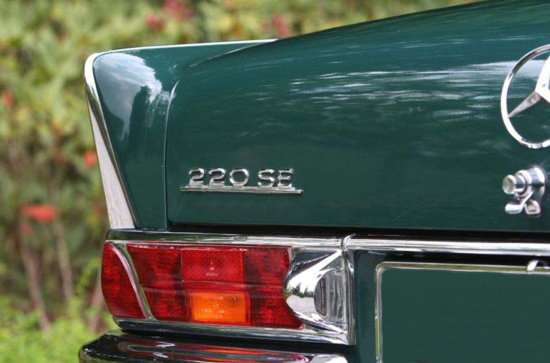
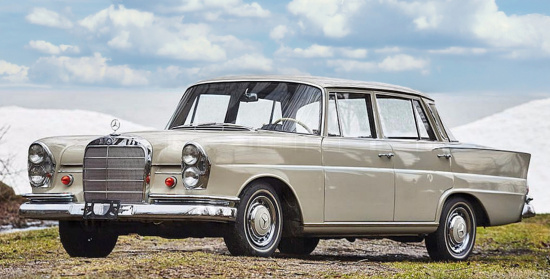
The North American models had special indicators
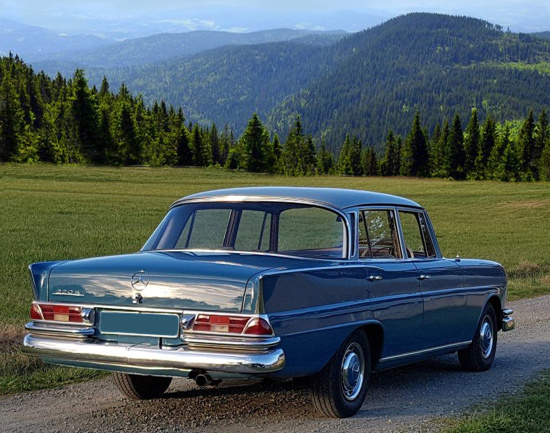
A well maintained 220S from the UK
In February 1959, seven months before the official market launch, the road tests were completed in typical Daimler-Benz fashion. Four prototype cars were driven by none other than Fritz Nallinger, Rudolf Uhlenhaut, Karl Wilfert and Josef Müller from Stuttgart south over some steep Alpine passes to Naples in southern Italy. Then they headed back north, following the Mille Miglia route via Rome and Brescia. They crossed the Alps again and passed through Munich before finally arriving in Stuttgart. Although it must have been quite a challenge for cars and drivers, these gentlemen must have had a great time.
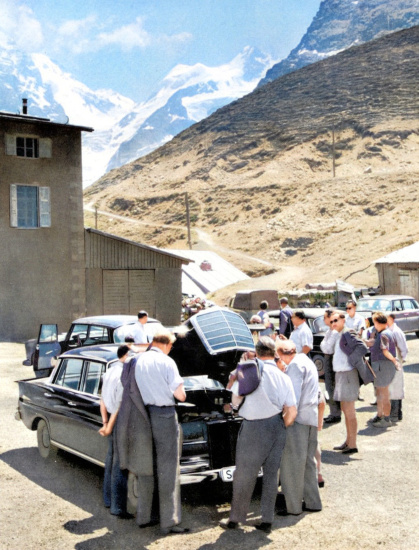
Mercedes W111 cars during tests in the Alps
The Mercedes W111 rally success
The sales department was convinced that rallies were a great promotional tool, and the prestigious Monte Carlo Rally was ideal for such advertising. After all, it was the oldest and one of the most prestigious rallies in Europe. The board was initially reluctant to support such activities. But in the end, three teams were selected for the 1960 Monte Carlo event: the experienced Schock/Moll and the rookies Böhringer/Socher and Mahle/Ott. Three people were available for service and technical support, only one of them a mechanic! Every car had two spare tires. 345 teams started the rally. As usual, they started from different European cities with Monte Carlo as the finish. Before reaching Monaco, they had to drive about 2,300 km (1,430 miles) across Europe, partly on snow-covered roads.
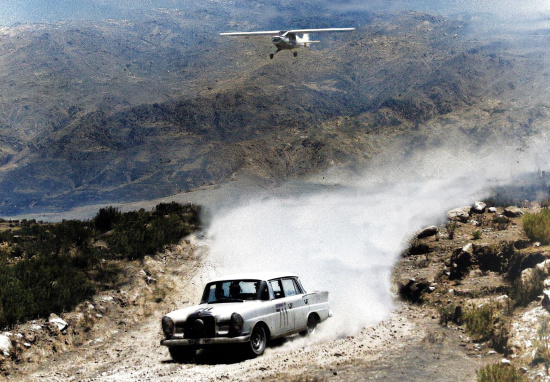
Boehringer in a 220SE at the 1962 Grand Premio di Argentina, followed by Neubauer in a chartered plane (b/w photo courtesy of Daimler AG, colorized by the author)
The three Mercedes 220SEs started from Warsaw. The technical modifications were minor. The suspension was lowered, stiffer shocks offered better road holding and the engine was tuned to deliver 138 instead of the normal 120 hp. By the time they reached Monte Carlo, half of their competitors had retired. After all the points had been counted, the Schock/Moll team had managed to win the grueling rally against all odds and much more powerful competitors. Not only that, but the rookies finished second and third. It was the first 1-2-3 sweep in the history of the Monte Carlo Rally. It was now easier to convince the board that rallies were good for advertising, and the teams were promised more support for such activities in the future.
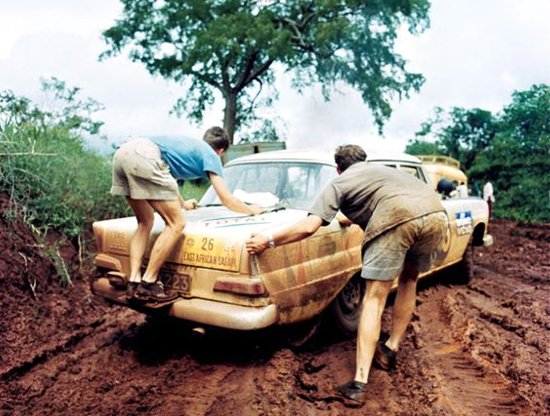
A Mercedes 220b at the East African Safari in 1961
In that year the 220SE won an incredible 117 victories. And Schock/Moll managed to secure the 1960 European championship. Yet more was still to come.
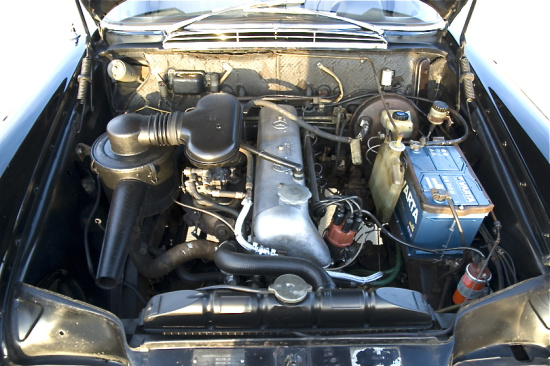
1964 220b engine
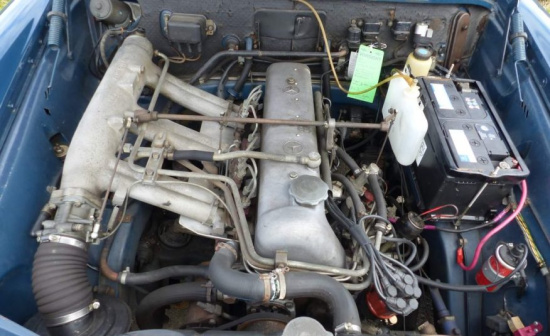
1962 220SE engine
The Mercedes 220b series was a sales success
In terms of sales, the W111 did not disappoint its creators either. Although the car is not considered one of Daimler-Benz’s design milestones today, it did what it was designed to do: it became Daimler-Benz’s first successful global executive car. Here is an overview of the sales of the various four-door W111 versions:
- 220b (1959-1965): 69.691
- 220Sb (1959-1965): 161.119
- 220SEb (1959-1965): 66.086
- 230S (1965-1968): 41.107
- 220Sb (1959-1965): 161.119
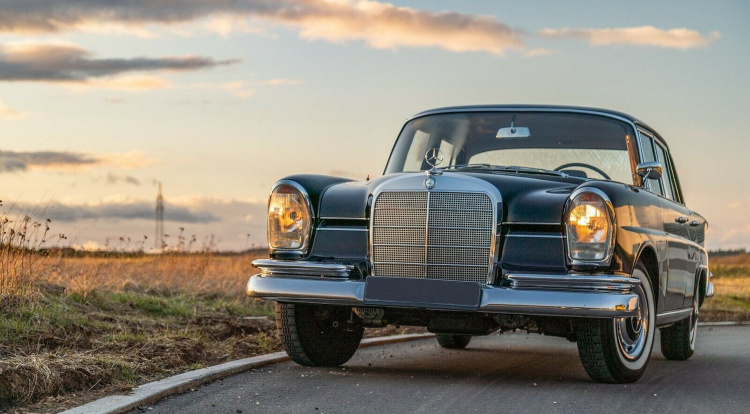
If you want to read more about the development and history of the W111 two- and four-door series, you can read it all in my book and e-book. It also includes a buyer’s guide, explains the chassis number and data card, and offers many new color pictures, including photos of the suspension. The link takes you to the US Amazon site, but depending on where you live, your local Amazon site will carry the book under the same title.
